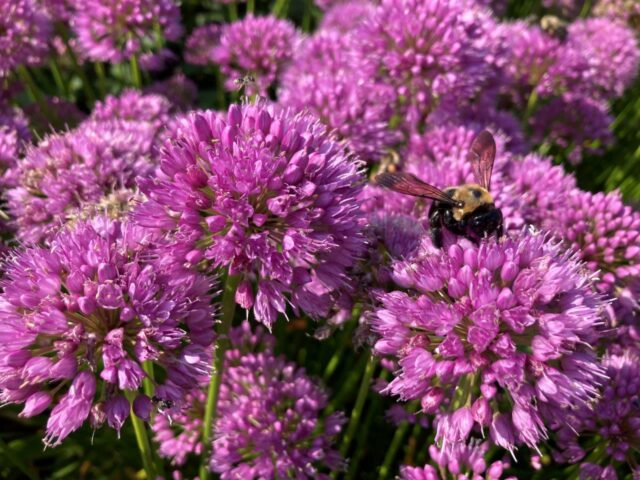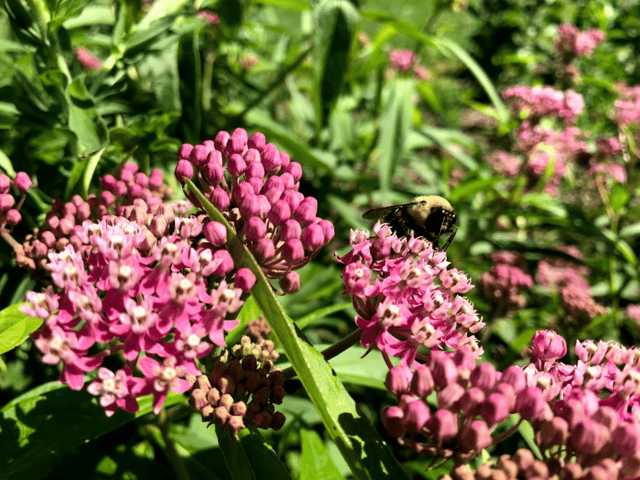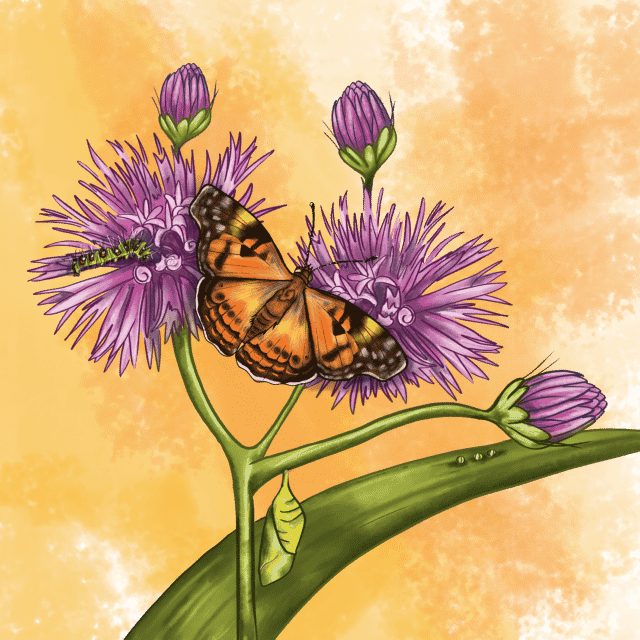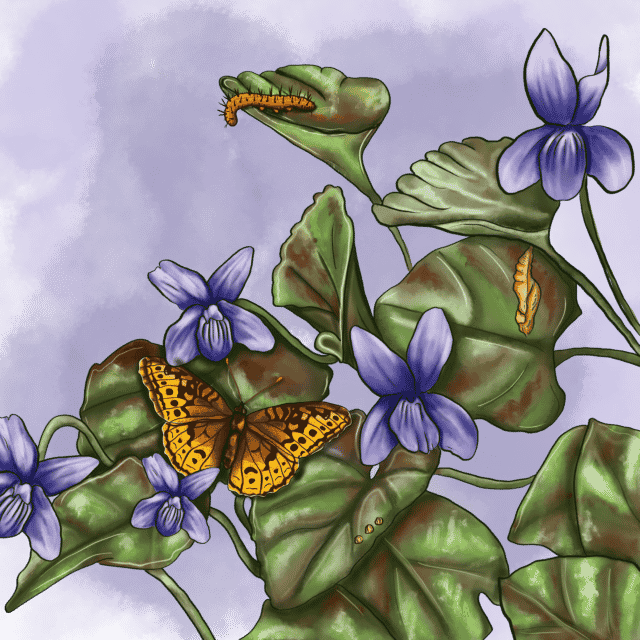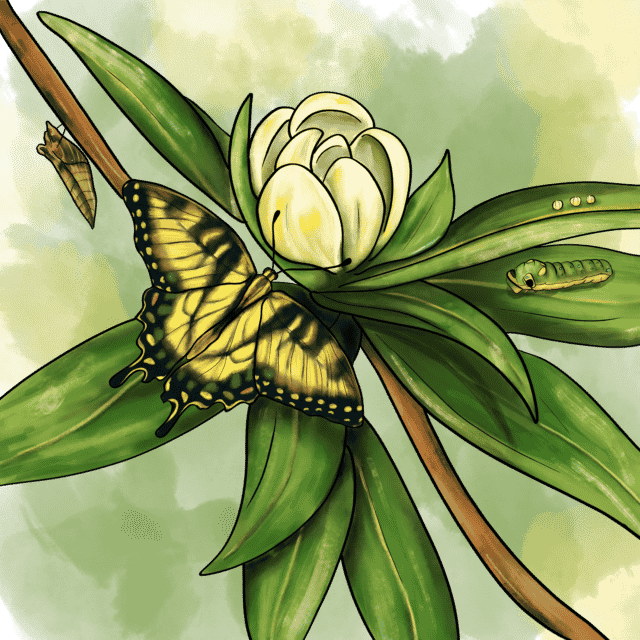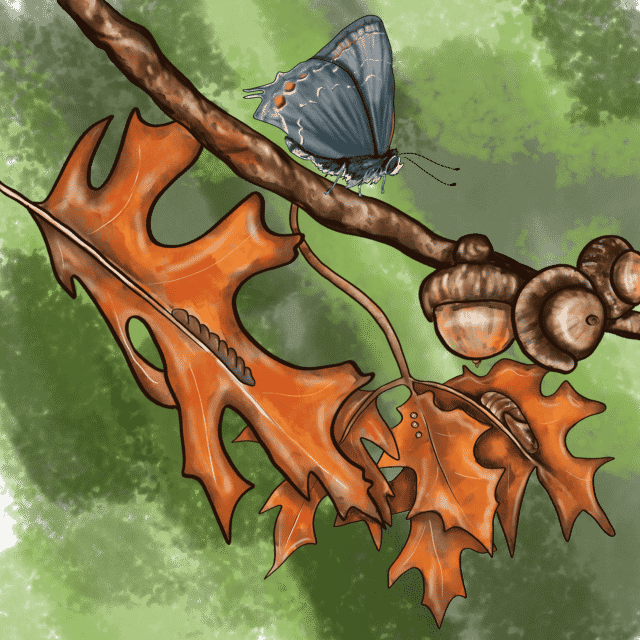
Some of the best pollinator gardens include just a few key features that make them work well. Food, water, shelter and host plants. One way to have the most food available is by having a continual bloom all season long. Selecting plants that bloom from early spring, like flowering bulbs and trees, to plants blooming into late fall can really help with survival. Late blooming plants help pollinators store energy needed to survive the winter. In the Arlene and Arthur Holden Butterfly Garden, we have several late bloomers that are beautiful and bountiful.

Tatarian aster
Aster tataricus ‘Jindai’ is the latest blooming aster in the garden. ‘Jindai’, is a shorter cultivar of the Japanese native. This herbaceous perennial grows four to five feet tall with a spread of about two feet. It does best in full sun and blooms from October into November with medium water requirements. If you look closely at the photo, you can see a honeybee staring back at you. This photo was taken the second week in November.

Chinese abelia
Abelia chinensis is a fall blooming shrub that blooms from August into November. It starts blooming in August, but as the flowers fade, the sepals are left behind to make it look like it is still flowering. It blooms sporadically into November. It grows to about six feet tall and five feet wide. It likes full to part sun and takes medium watering. This pollinator friendly shrub is located on the east side of the butterfly garden. You will know you are getting close by the sweet fragrance that fills the air. The red admiral butterfly that is pictured is just one species of butterfly that is attracted to this plant. It is also a favorite to honeybees and bumble bees as well.

Toad lily
Tricyrtis ‘Sinonome’ has beautiful white flowers with purple specks. It blooms from September to October and can get to about three feet in height and two feet in width. Tricyrtis ‘Sinonome’ likes rich soils with medium moisture in shade or part shade. It spreads by rhizomes and will colonize if conditions are right. Since Tricyrtis ‘Sinonome’ flowers are quite interesting and delicate, select a location that is close to the path. This will help admirers to see the detail in flowers. Bumblebees and honeybees frequently nectar on these flowers.

Lori Gogolin
Horticulturist
Lori Gogolin has been a horticulturist for Holden Forests and Gardens since 2010. She creates and manages healthy habitats for plants and pollinators in the Arlene and Arthur S. Holden Jr. Butterfly Garden. Lori has a degree in horticulture from Kent State University.
